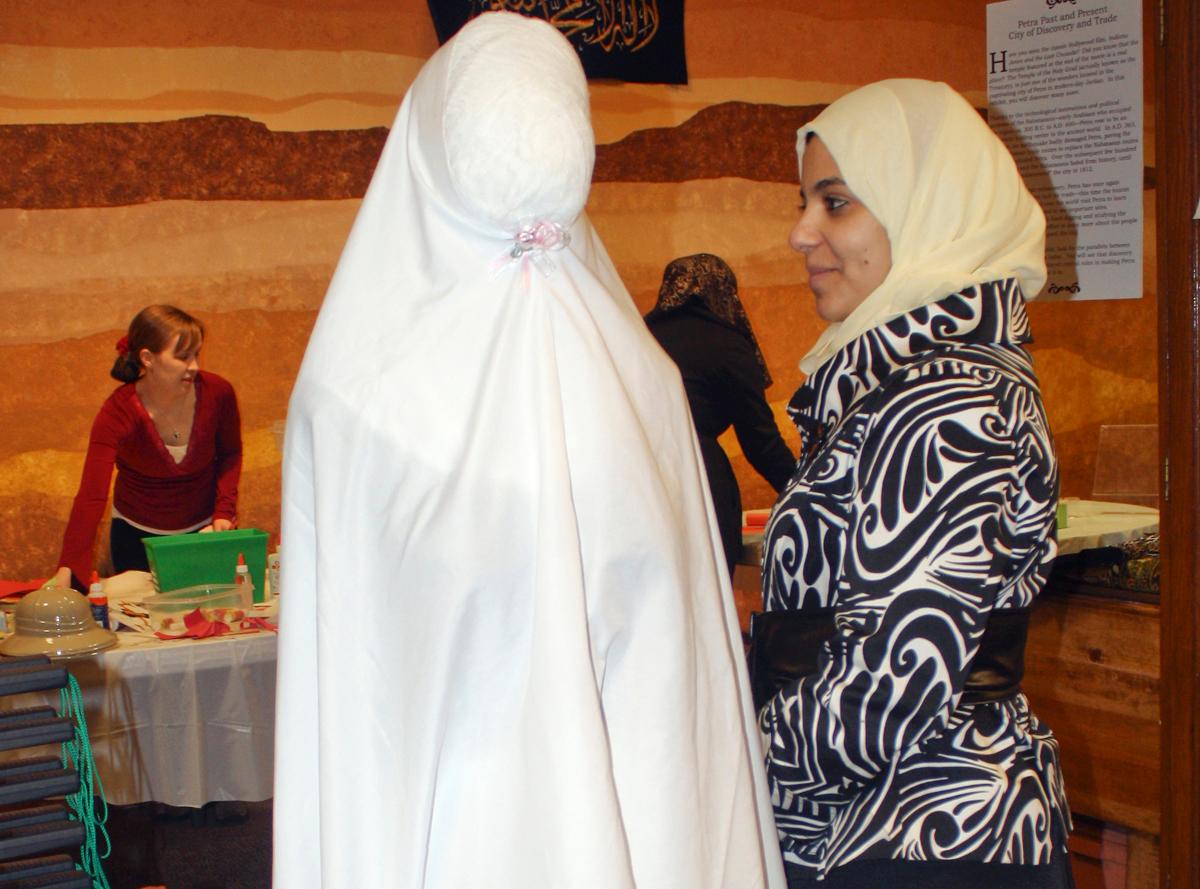Event reveals Muslim and Islamic differences
This Saturday’s Anthropology Museum event showcased Islamic culture and was hosted by representatives from the Logan Islamic Center.
“It’s different; it’s difficult to come here from the Middle East to live here with the different culture and different people,” said Basma Al-Molani, a volunteer from the Islamic Center. “But I like it here.”
Al-Molani was the main speaker, and covered various topics on Islamic culture, and the fundamentals of Islam. The five pillars of Islam as well as the life of the life of prophet Mohammad, who founded the Islamic religion, formed the cornerstones of the presentation.
Al-Molani said one of the differences between Muslim and Islamic is the belief that women in Islam are not allowed to drive cars. This is, in fact, an example of Saudi Arabia’s laws and not an explicit rule written in the Qur’an, he said.
After the presentation, there was a question and answer period. All the representatives from the Islamic center answered questions regarding Islam and Middle Eastern culture and clarified misconceptions people may have had.
The vast majority of the questions revolved around further clarifications between cultural laws and what is written in the Qur’an. Questions about the political temperament in the Middle East were also very common.
One question asked involved the rights of women seeking a divorce. Abdelhahaleem Khader, A Ph.D. student in civil and environmental engineering, said the reasons under which a woman could seek a divorce included neglect, abuse and other personal reasons.
Another question was about the tension between Islam and Judaism. Abdulkafi Albirini, assistant professor of Arabic and linguistics, and the president of the Islamic Center, said the tension that exists is more political than religious, and that the conflict is over the land in Israel not over the differences in religious beliefs.
“The community here is very supportive,” Khader said. “I hear in the days of 9/11 Muslim communities around the countries were attacked, but here in Logan – the community as a whole – and the community leaders, supported the Muslims here.”
The Islamic Center set up activities and displays to show different aspects of Islamic life with the help of the museum’s staff. Some of the children’s activities included a craft to remind them of the five pillars and the primary beliefs on which Islam is founded. This included writing their name in Arabic and learning simple Arabic words.
For adults, free literature was available, as well as displays of outfits worn by people living in Islamic countries.
The Islamic Center is the primary religious center in Logan. It offers prayer meetings, as well as Sunday school for children.It also offers Arabic classes for the children.
“The majority of the Islamic communities here in Logan are actually students from other part of the world,” Albirini said.
– randall.henry@aggiemail.usu.edu

